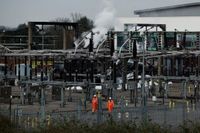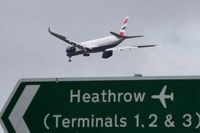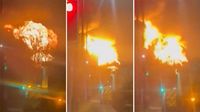Heathrow Airport, the United Kingdom's busiest and one of the world's most significant aviation hubs, has been forced to close until midnight on March 21, 2025, due to a significant power outage triggered by a fire at a nearby electrical substation. The incident has disrupted the travel plans of tens of thousands of passengers and created chaos within the aviation industry.
Heathrow, which serves over 200 destinations in nearly 90 countries, announced the closure in a statement on social media: "Passengers should not travel to the airport under any circumstances until the airport reopens." The airport, which typically sees around 200,000 passengers per day, was thrown into turmoil following the blaze, which the London Fire Brigade reported as significant. Approximately 70 firefighters were deployed to tackle the fire, with around 150 people evacuated from surrounding properties during the incident.
The airport's shutdown resulted in widespread repercussions, with at least 1,351 flights affected. According to Ian Petchenik of FlightRadar24, this disruption could severely impact airline operations globally. "This is going to disrupt airlines’ operations around the world," Petchenik cautioned, reflecting concerns about coordinated travel networks and available flight crews being stranded.
As with any significant operational hurdle, the scramble to manage canceled or diverted flights was immediate. Airlines including Qantas had to reroute aircraft away from Heathrow, and some flights that were already airborne needed to be redirected to alternative airports, such as Gatwick or even Shannon in Ireland. Qantas announced that affected passengers would be communicated directly about their travel options, emphasizing the urgency of the situation and their commitment to assisting travelers.
The chaos on the ground was palpable. Hundreds of passengers found themselves stranded or misinformed, leading to long wait times and added confusion. Twitter lit up with reports of passengers stuck in boarding areas and waiting areas of various airports, sharing their frustrations. One couple in Singapore was already at their boarding gate when informed about the cancellation of their flight: "They told us the flight was canceled because there’s been a fire in London," one member of that couple recounted.
Energy Secretary Ed Miliband remarked on the unusual nature of the fire's impact on the backup generators, underlining the severity and unexpectedness of the event. "There was a back-up generator, but that was also affected by the fire, which gives a sense of how unusual and unprecedented it was," he said. The morning after the incident, it was reported that the initial fire had been contained, but questions surrounding the root causes remained unanswered.
Interestingly, regulations surrounding Heathrow's operations will surely come under scrutiny in the aftermath of the outage. Not only did this incident shutdown a highly-rated airport, but it also disrupted flight schedules around the world—casting a long shadow over international travel coordination.
As Heathrow is set to remain closed until just before midnight local time, travel experts predict that the fallout from this unprecedented shutdown will have ripple effects through the travel industry for days to come. "Airlines’ carefully choreographed networks depend on planes and crews being in specific locations at specific times," noted travel analyst Henry Harteveldt. This implies that adjustments to flight schedules will not be quick, as recovery from such a large disruption takes time.
Heathrow's significance cannot be understated. It handles over 80 million passengers annually and around 1,300 takeoffs and landings each day, making it a vital thoroughfare for global air travel. The chaos at the airport underscores just how interdependent modern air travel has become, with one system failure leading to widespread consequences.
The fire that led to the power outage was first reported on the evening of March 20, with heavy smoke and bright flames visible from the substation. Firefighters worked tirelessly throughout the night, and by morning, they reported having brought the situation under control. Nevertheless, the damage was done, leaving many without power and thousands of passengers without travel options.
Looking forward, the focus will be on ensuring that such a situation does not occur again. The UK government indicated it would conduct a thorough review to understand the causes and implications of this incident. Moving forward, airport authorities might consider infrastructure improvements and enhanced fail-safes against future power-related failures.
As the airport slowly begins to regain operational stability, the full magnitude of this disruption will likely unfold over the upcoming days, forcing affected passengers to consider their alternatives and airlines to strategize their recovery plans. For now, Heathrow's continued closure serves as a reminder of the fragility of global networks and the challenges that can arise from even localized incidents.




